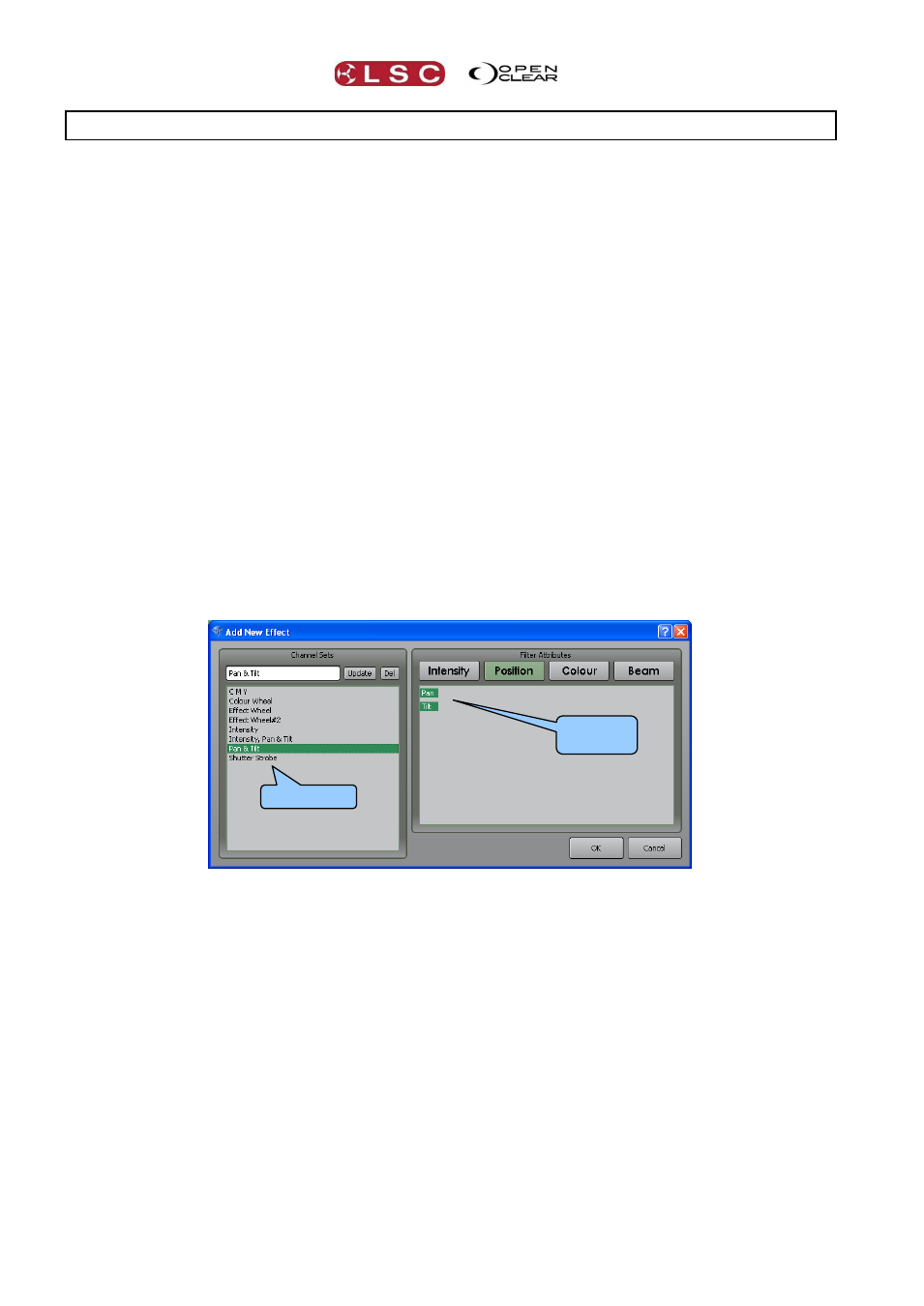16 dynamics (real time effects), 1 overview, 2 applying dynamics – LSC Lighting CLARITY LX Series v.1 User Manual
Page 114

Dynamics
Clarity
Operator Manual
Page 104
16 Dynamics (real time effects)
16.1 OVERVIEW
Dynamics can save you hours of programming time by creating movement from an otherwise
static cue. Dynamics mode allows you to add modulation (variation) to any attribute or
combination of attributes.
When a cue has been played back, the attribute values will normally be steady on the recorded
values in that cue. Dynamics add movement by continuously varying the (selected) attribute
values. These varying values are created by waveforms. Different waveforms (such a sine
wave, a ramp or a square wave etc) have different shapes and therefore cause different
movements. Varying the rate, phase, duty cycle etc of a waveform will cause a corresponding
change in the attributes that it controls.
Dynamics are created in the programmer and can be recorded as part of a cue or as a Preset or
Freeset.
Clarity comes pre-loaded with some Presets that contain dynamics such as circles and
ballyhoos. These are known as “Dynamic Presets”. If you select some fixtures and apply a
dynamic preset then return to the Dynamics window you will see the values that have been
applied to create the effect. Proglets can also be used to create and control dynamics. See
section 22.
16.2 APPLYING DYNAMICS
Select the required fixtures then select Dynamics mode (on the encoder touch screen on LX
consoles or in the Programmer window on Desktop Clarity) and select New.
The Add New Effect dialog box appears:
The Channel Sets pane on the left provides quick-access to some predefined attribute
combinations. Touch on a channel set to select it.
The channel set selected in the left pane can be further filtered in the right pane by touching
Intensity, Position, Colour or Beam or on the individual attributes. Combinations of attributes
can be selected by using by dragging.
If you select a channel set, then alter the selection of attributes in that channel set, you can
save your new selections by either updating the current channel set or saving your selections
as a new channel set.
To update an existing channel set, make your new attribute selection then click on
Update.
To add your own channel set, click on the name box below Channel Sets and type a
new name then click Add. The Update button changes between Add or Update
depending whether the name entered matches a name in the list.
When you have selected the attributes to which dynamics are to be applied, click OK. A
separate set of Amplitude, Offset, Centre, Top and Bottom dynamics Attribute Controls will
appear for each attribute.
Channel Sets
Selected
attributes
